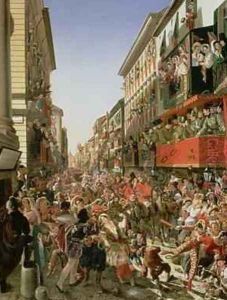Aleksandr Petrovich Myasoedov Paintings
Aleksandr Petrovich Myasoedov was a prominent Russian artist, born on March 26, 1834, in the Tula Province of the Russian Empire. He is best known for his realistic portrayals of peasant life and social injustices in rural Russia, making significant contributions to the genre of social realism in Russian art. Myasoedov's works are characterized by their detailed depiction of the Russian countryside and its inhabitants, often highlighting the harsh realities faced by peasants under the feudal system in place at the time.
Myasoedov's artistic journey began at the Moscow School of Painting, Sculpture and Architecture, followed by further studies at the Imperial Academy of Arts in Saint Petersburg. Despite facing initial resistance to his unvarnished portrayal of peasant life, Myasoedov's work gained recognition for its authenticity and emotional depth. His most notable works include 'The Zemstvo Dines' (1872), which depicts the disparity between the wealth of local government officials and the poverty of the peasants, and 'The Ploughman, Leo Tolstoy Ploughing' (1887), showcasing the famous writer and social reformer engaged in peasant labor.
Throughout his career, Myasoedov was actively involved in the Peredvizhniki (Wanderers) movement, a group of Russian realist artists who sought to break away from the academic restrictions of the time and bring art closer to the everyday life of the Russian people. His commitment to social issues and his ability to capture the essence of rural life in Russia earned him a place among the most influential Russian artists of the 19th century.
Aleksandr Petrovich Myasoedov's legacy extends beyond his paintings. He was a vocal advocate for artists' rights and played a crucial role in the establishment of the Moscow Society of Art Lovers, which supported artists financially and promoted Russian art both domestically and abroad. Myasoedov's dedication to depicting the realities of peasant life and his contributions to the development of social realism in Russian art left an indelible mark on the cultural landscape of Russia. He passed away on August 21, 1911, in Polotnyany Zavod, leaving behind a body of work that continues to be celebrated for its historical significance and artistic merit.
